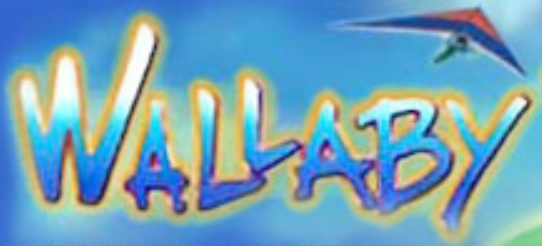Warning
The IHPA does not offer training or run any training schools or courses itself. If you wish to learn to fly then you should contact one of the schools mentioned here or other licenced schools overseas for details of their training courses. The information on this site is offered in good faith but the IHPA can take no responsibility for accidents or injuries sustained during training at any of the schools mentioned.
WARNING
HANG GLIDING AND PARAGLIDING (WITH AND WITHOUT A MOTOR) ARE FORMS OF AVIATION, WITH ALL OF THE INHERENT AND POTENTIAL DANGERS THAT ARE INVOLVED IN AVIATION. NO FORM OF AVIATION IS WITHOUT RISK. INJURIES AND DEATH CAN AND DO OCCUR IN HANG GLIDING AND PARAGLIDING, EVEN TO TRAINED AND HIGHLY EXPERIENCED PILOTS USING PROPER EQUIPMENT. NO CLAIM IS MADE OR IMPLIED THAT ALL SOURCES OF DANGER TO THE PILOT OR STUDENT HAVE OR CAN BE IDENTIFIED. NO ONE SHOULD PARTICIPATE IN HANG GLIDING OR PARAGLIDING WHO DOES NOT RECOGNISE AND WISH TO PERSONALLY ASSUME THE ASSOCIATED RISKS.
Learn to Fly Hang Gliders
Schools
Hang Gliding Schools
At present there are no hang gliding schools operating in Ireland (the Mt. Leinster school is out of action for the present) but there are a number of excellent schools in France, the UK and in Florida in the USA that are worth investigating. The schools in France are probably your best bet. They have English speaking instructors*, an excellent training programme, spectacular training sites, cheap accommodation (camping or B&B) and very importantly, excellent weather almost guaranteeing that you will complete your basic training in a week or so. Here in Ireland, and in the UK, our 'soft' weather can often mean that your weekend training sessions get dragged out over several months before you get to fly solo. A week or so spent in France, dedicated to training, will save you time and money in the long run.
School: Team Delta
Location: St. Hilaire du Touvet in the French Alps
Course Details: You will need to do their "Initiation Package" as a minimum. Excellent weather/training site/safety record + cheap flights/accommodation + great scenery! If you have time, try to get in as many extra solo flights as possible before returning to Ireland, they will pay off when you start flying from the hills here.
Getting There: Fly to Lyon and take the train to St. Hilaire or Fly to Paris and take the TGV train to Grenoble (3hrs) just 25km from St.Hilaire. You can get very cheap flights to France if you search around, or you could combine your training trip with a family holiday in the area. A number of our pilots have completed their initial training in France and recommend it highly.
Accommodation: Camping or B&B - Pre Vol Delta will be pleased to help you arrange low-cost local accommodation or you can contact the St.Hilaire Tourist Office. Click here for a list of hotels, B&Bs, gites and campsites. Distances (right hand column) are from the school / take-off.
* Note: If you sign up to a school in France, make sure that they clearly understand that you require an English speaking instructor for the duration of your course.
 La Deltisterie
La Deltisterie
School: La Deltisterie - (Original site in French)
Location: Laragne and Aspres - in the French Alpes
Course Details: FFVL licensed instructor, Sam Dupret offers instruction in English with tandem and solo flights in one of the world's premier hang gliding locations. Laragne and Aspres are the spiritual home of Irish hang gliding, with groups of pilots often spending the summer camping there. No better place to learn and earn your wings!
Getting There: Fly to Marseille or Nice and either hire a car or take the train to Aix en Provence and then onwards directly to Laragne.
Accommodation: Both Laragne and Aspres offer excellent, serviced camping, chalets and rooms.
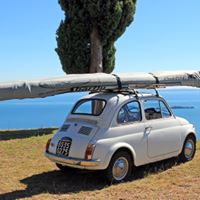 Garda Big Sur
Garda Big Sur
School: Garda Big Sur Flight Park
Location: Lake Garda, Italy
Contact: Ignazio Bernardi - hang glider pilot since 1985, free flight (hang gliding and paragliding) instructor, member of the Italian hang gliding team for over ten years, designer and test pilot for Icaro2000, Woody Valley, Swedish Aerosport, gold medal winner 2005 at the first hang gliding aerobatics championships held in Montreux.
School: Cloud 9
Location: Cornwall, in the south of England
Course Details: You will need to do both the EP and CP courses. If the course is tow or winch based then you must also complete a Hill Launch Conversion course - this is essential in order to be able to launch safely in Ireland as all our flying sites are hill launch sites.
School: Lejair
Location: Algodenales in the south of Spain and Norfolk in the UK.
Course Details: You will need to do both the EP and CP courses. If the course is tow or winch based then you must also complete a Hill Launch Conversion course - this is essential in order to be able to launch safely in Ireland as all our flying sites are hill launch sites.
Lejair are a BHPA registered hang gliding school and offer hang gliding and paragliding services in sunny Southern Spain based in Algodonales, a free flying paradise. They offer beginner courses for people wanting to learn hang gliding to advanced thermal courses also guided weeks for hang glider and paraglider pilots. Algodonales is a place to take advantage of the better weather to finish your hang gliding training. They also run summer courses in the United Kingdom from their Norfolk Norwich base for 6 weeks from beginning of August each year.
School: Wallaby Ranch
Location: Florida, USA
Course Details: 10 Lesson Package
Getting There: Fly to Orlando, Florida, USA
Accommodation: Camping, Club House Rooms, Local Motels
{tabtitle=" "}
"}
School: Florida Ridge
Location: Florida, USA
Course Details: Pilot Programme
Getting There: Fly to Orlando, Florida, USA
Accommodation: Camping, Club House Rooms, Local Motels
{tabtitle="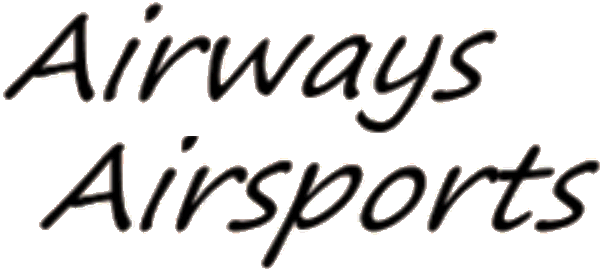 "}
"}
School: Airways Flight Park
Location: Ashbourne, Derbyshire, UK
Course Details: Elementary Pilot Certificate
Getting There: Car ferry to the UK or Fly & Drive.
Accommodation: Check out their list of B&Bs.
Before Your Training Starts
Before your training course starts
Contact the IHPA Training & Flight Safety Officer: The first thing you need to do is to notify the
IHPA Student's Training Record & Log Book: All pilots are required to keep an accurate log of all their training and flights, and have it signed off by their instructor as they progress through their training. Without a log book you will not be able to apply for a Pilot Rating when you return to Ireland. The IHPA provides Student Training Record & Log Books free of charge.
Training Manuals and Required Reading:
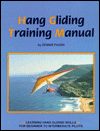
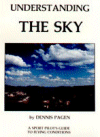
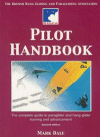 The IHPA requires all Student and Novice Pilots to own a copy of Denis Pagen's Hang Glider Training Manual. This is the acknowledged de facto standard training reference used by pilots and schools around the world, and it is essential that you read it thoroughly before you start your training course. It is available from Green Dragons website and Amazon.
The IHPA requires all Student and Novice Pilots to own a copy of Denis Pagen's Hang Glider Training Manual. This is the acknowledged de facto standard training reference used by pilots and schools around the world, and it is essential that you read it thoroughly before you start your training course. It is available from Green Dragons website and Amazon.
The IHPA requires all pilots, regardless of their level of experience, to own a copy of the BHPA Pilot Hand Book and to have read it thoroughly. This book not only offers essential safety advice for hang glider pilots but also offers insight in to flying safely with paragliders and other pilots.
Finally, the IHPA requires all hang glider Student and Novice Pilots to own a copy of Denis Pagen's Understanding the Sky. This is an excellent and easy to understand primer into meteorology and micro-meteorology written by one of the most experienced pilots around.
Travel Insurance and the European Health Insurance Card (formerly E111): Before you travel abroad for training you will need to buy both Travel Insurance that specifically covers dangerous sports like hang gliding and paragliding, and you will also need to obtain a valid European Health Insurance Card. You can apply for an EHIC card on-line or from your local National Wellfare Office or Health Authority. A valid EHIC card entitles you to free medical treatment while you are traveling in Europe and will save you from 'out of pocket' medical expenses. Travel Insurance and an EHIC card are essential in the event that you have an accident requiring medical treatment and repatriation. Fly Koessen / AXA offer inexpensive policy options for hang glider students under instruction (single trip cover) and also annual accident and personal liability cover. DO NOT travel without these.
Flights & Car Hire: Check out flights at www.cheapflights.ie. It is often significantly cheaper to book a hire car from Ireland (www.hertz.ie or www.avis.ie) than once you are in France, so shop around, but you probably will not need a car anyway once you are at your training school. Transport is usually provided.
Medical Certificate of Fitness: It is likely that you will be asked by the training school to provide a doctor's certificate stating that you are fit and healthy enough to participate in strenuous physical exercise - check with your chosen school before you travel. Hang gliding training involves a lot of running down steep hills and carrying your glider back up again... and again... and again... Get yourself checked out by your GP before you travel, and explain to him why you need a certificate of fitness.
The Training Course: If you are lucky with the weather you should be able to complete all of the Safe Pro 2 requirements and be taking your first solo flights before you return home. You should be able to control the speed and direction of the glider, and to land safely in a designated landing area. Record all your flights (training hill, tandem and solo flights) in your Log Book. At the end of your basic training course you should ask your instructor to sign your IHPA Student's Training Record & Log Book and indicate which practical skills you have mastered. You should also ask your instructor for a certificate of competence stating the FAI/CIVL Safe Pro level you have reached so that you can be credited with this Pilot Rating once you return to Ireland.
It is likely that your training course will consist of a theory session each morning, followed by ground school where you will learn to assemble, inspect, and adjust your glider and harness, and to ground-handle it safely in a light wind.
On flat ground you will learn how to accelerate the glider by walking and running until the glider is aftually flying. You will learn how to control the pitch and roll of the wing while you are running with the glider and how to stop the glider by flaring.
When you have mastered these essential foundation skills you will repeat them by running down a gentle slope - your feet leaving the ground for the first time! - and land safely at the bottom.
In the afternoons, it is likely that you will fly in tandem with your instructor from a high and steep take-off point. This allows your instructor to hand over the control of the glider to you so that you can learn how to judge your air-speed and stall warning signs, and to manoeuvre the glider down to the landing field.
When your instructor is satisfied with your progress he will help you launch on you first high solo flights. It is essential that you complete as many solo flights as you possibly can in the time you have available to you. The more solo flights you do the quicker you will become a competent pilot.
After Your Training Course
After your training course
I have completed my basic training - What next?
Contact the IHPA Training & Flight Safety Officer: The first thing you need to do after returning home from your training course is to contact the
Join the IHPA - It's free! If you have not already done so then pleasejoin us today! Just click on 'Join the IHPA' in the main menu and fill in your details. Membership is free to new members and students for the first year (up to 31st March.) The IHPA can not assign a Coach to you until you are a member and have signed the indemnety waivers. With so few pilots spread out all around the country there are no clubs, as such, that new pilots can join. The IHPA acts as an umbrella organisation, keeping members in touch with each other and with what is happening on the Irish scene, organizing insurance and tackling problems and issues as they arise, and generally looking out for pilot's interests wherever necessary. Join the IHPA mailing list and keep in touch with other pilots.
Apply for a Safe Pro 2 Pilot Rating: When you return to Ireland you must submit your IHPA Student's Training Record & Log Book to the IHPA Training & Flight Safety Officer and apply for a Safe Pro 2 (or 1) Pilot Rating. You will be required to complete a written multiple-choice-question exam paper before you are awarded your Pilot Rating. The Safe Pro 2 exam is very simple and should present no difficulty to any student who has read the appropriate chapters of Denis Pagen's Hang Glider Training Manual. You can prepare for your exam by reading through the Safe Pro 2 Exam Study Guide, which will tell you exactly what to expect without actually giving you the answers.
Continuing Your Training in Ireland: It is imperative that you do not attempt to fly or train on your own once you return home. You risk serious injury, or worse, if you do. The IHPA has nominated hang gliding Coaches and senior pilots who will be happy to help you continue your training and learning. Contact the
Irish weather conditions are very different to those you will have experienced during your training course abroad. The weather in Ireland can and does change rapidly. This is a serious hazard for the inexperienced pilot. Student and Novice pilots are required by the IHPA to specifically ask their Coach or senior pilot for a full briefing on the weather and local conditions, and how it is expected to change through the day. Student and Novice pilots are also required to specifically ask for a full site briefing, detailing the hazards in both the take-off and landing areas.
Student and Novice pilots may only launch from sites where the landing field is visible from the take-off area and within easy glide of the take-off. Student and Novice pilots are required to plant a clearly visible wind sock in the middle of the landing field before they launch.
Student and Novice pilots are required to attach a broad red ribbon to the kingpost of their gliders to identify them to other pilots as inexperienced pilots with limited knowledge or ability to manoeuvre.
Student and Novice pilots are required to be in radio contact with their Coach or mentor at all times during their flight so that thay can receive guidance and advice on the changing weather conditions.
Log Books: It is essential to maintain an accurate log book while you are training abroad (and at home) if you wish to apply for a Pilot Rating. Your log book will also help the IHPA Coaches to assess your ability and progress each time you come out to train. You will initially be assessed on an easy training slope and given all the help you need to perfect your take-off and landing techniques before you will be allowed to progress to the higher, more technical and challanging sites. Student Training Record & Log Books are available from the
Sourcing Equipment
Sourcing Hang Gliding Equipment
Initially, all the equipment you need will be provided by the training school you attend, but once you return home you will need to buy your own. Here's what you will need:
- Glider - You will almost certainly be able to pick up a second hand beginner's glider here in Ireland for under €1000. Contact the IHPA Training & Flight Safety Officer who can help you locate a suitable glider for you. You will always be able to re-sell your first glider when you trade up to a higher performance wing.
If you intend to buy a wing from abroad, make sure that it has been fully serviced and that the side wires have been replaced in the last 12 months. Your life depends on the structural integrety of the glider, so have your instructor or a senior pilot inspect it before you hand over any cash.
Suitable gliders for novice pilots are the Airwave Calypso, the Aeros Target, the Icaro Relax and similar low performance gliders with easy handling characteristics. Don't be tempted to buy and fly a hot-ship before you have many hours of flying experience... it will be the last thing you ever do. - Helmet - Don't compromise here. Buy yourself a NEW full-face helmet. You cannot say with certainty what treatment a second hand helmet has had. Any damage may not be immediatly visible. The Charley Insider full-face helmet is a good model, offering both comfort and protection. Check out the Green Dragons or Firebird UK shop.
- Flying Suit - It gets cold up there in the air, so you may want to invest in a one piece thermal body suit to keep you warm. There are several manufacturers in the UK and Europe, but the cheapest appears to be Skywears in Pakistan! Dispite the distance, they have proved to be reliable and reasonably fast.
- Harness - You can probably pick up a second hand harness in Ireland if you search around, but you would be just as well to look for one while you are abroad training. Harnesses are personal items and it is important that you get one that fits your particular body shape and is comfortable in flight. If you intend to buy a second hand harness, have your instructor or a senoir pilot thoroughly inspect it first. Like the glider, your life depends on it.
- Parachute - If you can fly high enough to throw your reserve parachute, you are flying high enough for it to save your life. Except when you are on the training slopes, NEVER fly without a reserve parachute. Like your helmet, this is one item that you should buy NEW. It must be correctly sized to match your all-up flying weight (your weight + clothes + harness + glider) if it is to return you to Earth in one piece. There are many reserve parachutes available; some for hand gliding and some for paragliding. Get professional advice before you buy. One make that has proved its worth time and again in competition and recreational flying is the Metamorfosi Conair, now manufactured by Moyes Delta Gliders.
- Instruments - You do not need any instruments while you are training. In fact, they will only distract and confuse you until you become comfortable and proficient in the air. You can probably pick up a second hand variometer (vario) and combined air-speed indicator / stall alarm for a reasonable price here in Ireland. They really only come into their own when you are flying in thermic conditions across country... which you won't be doing in your first year! For simple ridge-soaring flight, the best instruments are your senses! If you want to check out what is available on the market, try looking at the Brauniger, Flytec, Digifly, Aircotec and Garmin web sites. These toys tend to be expensive, new, so get the advice of another pilot as to what you should be looking for.
Resources for New Hang Glider Pilots
(What kit you need, where to get it… and other useful info)
Insurance, Waivers and Membership Forms: Before you can fly in Ireland you *must* have valid insurance to cover third party damage and public liability. This is not optional. You will also need to sign a declaration and waiver to protect the landowners from whose lands we fly from and over. Without this, you will not be able to fly some of the most spectacular sites around the country, which are protected by locked gates. Insurance costs around €60 and IHPA membership only €40 – cheap at twice the price when you consider what you are getting, the sites you get to fly and the unpaid work the IHPA does on your behalf. So, if you haven’t already sent in your membership forms and applied for insurance, contact the IHPA Treasurer (see the Contacts page) or send an email to
IHPA Forum & Mailing List: First things first – The IHPA is an association of pilots, run by pilots. You can join the IHPA mailing list by going to www.ihpa.ie and clicking on the Contacts link. Sign up and jump in – no question too stupid! The mailing list will keep you up to date with what pilots are doing around the country; when and where to meet for flying; safety notices, etc. The mailing list is the IHPA’s main way of keeping all pilots in the frame and bringing pilots together. You might also want to sign up to the UHPC mailing list at www.uhpc.f9.co.uk and The OzReport at http://ozreport.com/index.php for news on the international scene. The IHPA mailing list should be your first port of call when looking to pick up second hand gear, and could well save you an unnecessary trip to the UK.
Magazines: The BHPA's SkyWings magazine and Cross Country magazine are two good places to start reading, but check out the Web Links page of this website for more magazines and books.
Buy & Sell sites for gliders and equipment: Check out the Buy & Sell page on this website. It also has links to several other Classified Ads pages in the UK. Skywings magazine is also a good place to look for second hand equipment, but you'll need to subscribe to receive it.
- IHPA Buy & Sell Forum
- Sky Ads
- SkyWings Mag
- FireBird UK
Choosing and Sizing a suitable wing: When choosing your first wing after your training course it is very important that you not only get the correct type of wing (beginner / low-end intermediate) but it must also be the correct size for your weight. The size of the wing plays a very significant role in how quickly the wing responds to your control inputs; how it feels in turbulent air, and how well it stays up in light conditions. Choose a wing that is too big for your weight and it will feel stiff in roll and will frighten you in strong conditions. Choose a wing that is too small, and although it will respond very quickly to your control inputs, it will also sink out more quickly on light wind days! It's all to do with 'wing loading' - a subject you should already have thoroughly read up about in your Hang Gliding Training Manual.
Ideally you want to choose a wing size that puts you somewhere in the middle of the glider's certified weight range. Check the manufacturer's websites or the Hang Gliding Bible for glider certified weight ranges and specifications. You need to work out what your 'Clip In Weight' is going to be. This is the sum of your own weight, fully dressed for flying, and the weight of your harness, helmet, parachute and any other gear you take with you into the air.
Beginner / Intermediate Hang Glider Wings:
*** Make sure you get NEW side wires with your new (second hand) wing, or find out from the seller where you can buy them. Side wires MUST be replaced every year without fail. You should treat them as a disposable item (like tyres on your car or toner in your laser printer) and replace them without fail. Your life depends on these wires – don’t compromise your safety.
Check out the specifications (and in some cases, the original manuals) on many new and old hang gliders in the Hang Gliding Bible.
- Aerial Arts Clubman – second hand only.
- Aeros Target - Fran Denny
- Airborne Fun (Sting too high performance?)
- Airwave Calypso – second hand only.
- Avian Elan and Rio
- Finsterwalder & Charly Funfex and Perfex
- Icaro Relax and Orbiter
- Moyes Malibu, XT145 and Sonic
- NorthWing Freedom / Horizon / Illusion / Ezy
- Offpiste Discovery – second hand only
- Wills Wing Falcon
- Also, check out the BHPA Links to shops and companies selling HG/PG gear and more.
Hang Gliding Harnesses:
- Finsterwalder & Charly
- Firebird UK - reseller
- Woody Valley
- Avian Gliders UK - reseller
- Moyes Delta Gliders
Full Face Helmets: Don't compromise here. Buy yourself a NEW full-face helmet. You cannot say with certainty what treatment a second hand helmet has had. Any damage may not be immediately visible. There are lots of different makes and models, but make sure that the helmet you choose is certified to the EN966 standard.
Reserve Parachutes: Metamorphosi's Conar parachutes are the acknowledged best reserves available. The Metamorphosi website also has a table of comparisons of all the popular reserve systems on the market. Google on ‘Metamorfosi Parachutes’ and read the independent testimonials. Almost all of the top pilots (HG & PG) use them. Other manufacturers to consider are:
Flight Instruments: A variometer (vario) is an instrument that tells you your altitude above sea level and above take-off, your airspeed and how fast you are climbing or sinking in the air when flying. There are a number of different models available, ranging from the simple to the very complex units that some competition pilots use. The more complex varios will not make you a better pilot than the simpler ones, so don’t waste your money on a lot of hi-tech gadgetry you don’t need. A simple vario will suite your needs for many years. You can always upgrade to a flashier GPS model later and sell on your old equipment to new pilots coming into the sport.
- Brauniger
- Flytec
- Digifly
Radios: Read the section on radios in the Flight Safety section of this website. Then do a search on eBay for Alinco DJ193, DJ195 or similar 2m band radio. Push To Talk (PTT) switches, wires and connectors are notoriously prone to problems and soon fail (either totally, or giving intermittant or constant transmission.) The Motocom PTT system is reputedly the best of the lot according to many pilotswriting to the OzReport.
Red Ribbon: For your own safety you should attach a two foot length of broad red ribbon to the top of your king post to identify you to other pilots in the air as a low-airtime pilot. Other pilots seeing this red ribbon will try to give you as much room to manoeuvre as possible and will generally try to stay out of your way, and will be aware that you still have limited control of your wing. This is for your own safety – take advantage of it. Most new pilots keep flying with the red ribbon until they have well over ten hours of airtime.
Irish Agents for flying gear:
- Fran Denny – Aeros gliders and harnesses
Learn to Fly Paragliders
Training in Ireland
Paragliding Schools in Ireland
The IHPA does not provide training directly, however if you want to learn to paraglide you will need to go to an IHPA approved training school. Approved schools can provide you with a full course of professional training (or just a weekend introduction to the sport) delivered by dedicated and fully licenced instructors. Only by training with an approved school will you be able to apply for an internationally recognised and accepted Pilot Rating and FAI/CIVL International Pilot Proficiency Identity (IPPI) card, which is required when flying in competitions or while on holiday abroad.
BEWARE! - Please be aware that there are a small number of self-styled 'instructors' operating around the country who hold no recognised professional qualification to act as an instructor. If you are considering learning to paraglide in Ireland then please contact the IHPA's Training & Flight Safety Officer to verify the professional qualifications of your chosen instructor. The same holds true for pilots offering tandem flights - check with the IHPA before risking your life.
Paraglide Adventure Ireland
Paragliding training in the Dublin area is available from Fred Lahiff's training school (phone: 087 258 9245, website at www.paraglideadventure.com). Fred's school is based near Bray, Co. Wicklow, but training may take place at any one of a number of locations around the Dublin and Wicklow Mountains, depending on the wind direction on the day. Contact Fred directly for more information.
- Paraglide Adventure Ireland is an IHPA approved paragliding school with over 20 years experience of running training courses.
- All their courses adhere to the IHPA's safety recommendations, tasks and flight requirements so whether you wish to just try a taster two day course or complete a qualification course and gain an international proficiency rating.
- All initial training take place at a number of sites in the Wicklow Mts.
- They supply all the flying equipment but you will need to wear a pair of ankle supporting boots and dress appropriately for the location, weather and time of year, standing around on a hill in wind can be quite cold at any time so warm layered clothing is essential, hats and gloves and plenty of food are a good idea.
For full information on all their training courses check out www.paraglideadventure.com or phone Fred any time on 087 258 9245.
Fred Lahiff CFI
Paraglide Adventure Ireland.
Tuition, and Equipment Sales
Training Overseas
Paragliding Schools Overseas
New pilots who have completed their initial training in a BHPA school (or any other NGB accredited school overseas) who want to convert their Club Pilot rating to Para Pro 3, the minimum requirement to allow them to fly unsupervised, should read the following:
The BHPA CP rating is broadly similar to our own Para Pro 3 (Novice) rating - BUT there are significant differences in the tasks and experience requirements that must be met.
The BHPA CP rating is the bare minimum training required to allow a novice pilot to wobble around the skies without placing either themselves or other pilots in too much danger. In Ireland the minimum pilot rating required to fly unsupervised is Para Pro 3 (Novice).
The flight experience and task requirements for a Para Pro 3 (Novice) rating are a little higher than those required for a CP rating, and it is essential that the new student pilot gain ALL of those proficiencies and experience under the watchful eye and guidance of an instructor.
Student pilots are reminded that they are not free to fly outside the school environment until they have been awarded a full Para Pro 3 (Novice) pilot rating. Those pilots who have only attained a Para Pro 2 (Elementary) or a CP rating are obliged to continue their training in a school until they have been awarded Para Pro 3 (Novice). Flying unsupervised with only a Para Pro 2 (Elementary) or CP rating is a blind alley that will not lead to gaining a higher pilot rating, as those flights taking place outside the instructor's supervision will not be counted towards the Para Pro 3 (Novice) rating requirements. All pilots should be aware of this and advise any student pilots flying unsupervised accordingly.
Those new pilots wishing to convert their CP rating to IHPA Para Pro 3 (Novice) will need to enrol with a school to complete the remaining tasks and flight experience necessary for the Para Pro 3 (Novice) rating. The school will credit you with all the tasks and experience you gained on your CP course, and you need only complete the outstanding tasks, and log the necessary flights before sitting the Para Pro 3 (Novice) exam paper.
The Experience Requirements for IHPA Para Pro 3 (Novice) are that the pilot must have completed a minimum of 60 flights totalling not less than 10 hours in the air as pilot-in-command. These flights must be spread over at least five different launch sites, of which at least three must be inland flying sites. The pilot must have spent a minimum of two hours in lift over any three flights.
Novice Plots who have been awarded a Para Pro 3 (Novice) pilot rating from an overseas school will be required to provide a logbook, signed by their instructor, detailing their exprience (60 flghts and 10 hous minimum) before the IHPA will issue an IPPI card.
The reason the IHPA requires this minimum level of instructor supervised experience is that the meteorological conditions in Ireland are significantly more challanging than those experienced in a typical school on the continent. These experience requirements are for YOUR SAFETY and the safety of other pilots. We do not want to see you get hurt! Please do not see this requirement as a penalty, but as an insurance policy. Any extra time spent training under the supervision and direction of an instructor only serves to make you a safer pilot. Injuries cost you time, money and pain!
New CP pilots who completed their course using a Tow or winch system will also be required to complete a Hill Launch Conversion course so that they can foot-launch to the satisfaction of their instructor.
Attaining a Para Pro 3 (Novice) or CP rating is not the end of the training period in a new pilot's career. They are required to actively progress towards attaining a Para Pro 4 (Intermediate) or 'Pilot' rating with the assistance of a Club Coach, who will sign off the required Rating Tasks, and pass the Para Pro 4 (Intermediate) or 'Pilot' exam.
A list of current IHPA Club Coaches is available on the website - Here.
The IHPA would like to encourage as many PP3+ pilots as possible to become Club Coaches so that we can grow an effective network of coaches to help new pilots entering the sport. As always, the IHPA will refund the course fees on successful completion of the course.
Philip Lardner
IHPA Training & Flight Safety.




